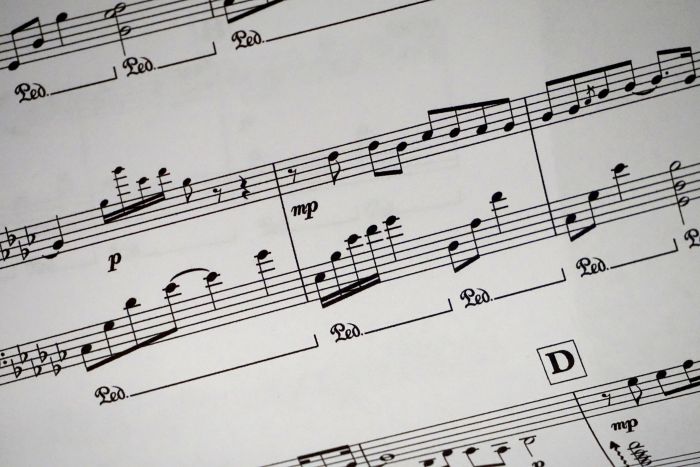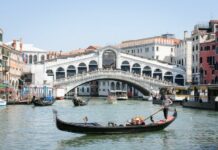
We are now – hopefully – out of the emergency phase of the COVID-19 pandemic and have begun what I would dare to call a new ‘era’, that of the ‘green’ socio-cultural revolution. All great events in the history of mankind inevitably cause changes in society: can we perhaps look at the post-pandemic as the beginning of a new cultural era? A ‘green’ cultural era?
The pandemic changed the geo-political and economic scenarios of the entire planet with unimaginable speed. In a phase of absolute emergency, the words ‘urgency’ and ‘intervention’ were the most frequently used. For this reason, Italy will receive about 209 billion Euros from the Recovery Fund, the largest share among the member countries as the first beneficiary of the resources foreseen for the entire Next Generation EU Fund. 37% of the resources allocated to Italy are to be attributed to green, making use of a more transversal concept of sustainability. The main actions of the EU Recovery Fund have the environment as their common denominator: a green revolution that will have to impact above all on the concepts of innovation and maximum exploitation of renewable energy.
Just a few hours ago, the G20 summit in Rome reached an agreement on climate change: the ceiling for global warming has been set at 1.5 degrees and there is a commitment to zero emissions by the middle of this century. Italiam Prime Minister Mario Draghi commented: “We win or we fail together. As G20 we have the responsibility to show leadership and lead the world towards a more sustainable future”.
To keep faith with this agreement, the hoped-for green revolution must be based, in my opinion, on a solid socio-cultural ecological transition: culture at 360 degrees plays a fundamental role for the recovery after the pandemic and also to promote environmental transition.
Literature turns ‘green’
Literature has always had a prophetic function. The narration of a possible future, the creation of an imaginary world, from time to time apocalyptic, fairy-tale or allegorical, is part of the narrative tradition of the world. Reflection on time and tomorrow has produced great masterpieces, and it was not until the middle of the twentieth century that the term science fiction was coined to define a macro-genre.
But what is climate fiction, or cli-fi for short? It is a genre somewhere between science fiction and dystopia, because of its tendency to depict tragic, post-apocalyptic scenarios; but, at the same time, it is a kind of hypothetical realism, because of the political and civil aims with which it recounts a situation to which we can no longer turn a blind eye. We have a stubborn reluctance to accept that environmental catastrophes can really happen. We overlook or ignore scientific predictions. But a few eco-scenarios, confirmed by the reactions of a nature already at the limits of sustainability, have made their way into our imagination through environmental fiction, or rather fantasy-ecology as a sub-genre of science fiction.
However, climate fiction is by no means a radical novelty. Stories about human interference in the climate can already be found in Native American creationist stories, Greek mythology and English Renaissance poetry. What distinguishes climate fiction is the emphasis on humans as the cause of climate change and the catastrophic effects that this generates.
Among the publications that best represent the literary genre is Solar (2010) by Ian McEwan, which tells the story of a Nobel Prize winner who tries to obtain renewable energy by replicating the photosynthesis process of plants. The other big name in the genre is Margaret Atwood, author of a trilogy in which a planet increasingly overwhelmed by climate change and in which genetic engineering is widely used is struck by an epidemic. Oryx and Crake (2003), The Year of the Flood (2009) and MadAddam (2013) are the three titles of the dystopian trilogy.
In fact, some writers have dealt with similar themes even before climate change was mentioned. This is the case of Jules Verne in The Earth Turned Upside Down (1889) in which the protagonists struggle to return the Earth’s axis to its original position. J. G. Ballard published The Wind From Nowhere (1961), which tells of the arrival of a hurricane capable of destroying all buildings and human works. In The Drowned World (1962), global warming causes glaciers to melt and seas to rise, submerging the major cities of Europe and North America. The Burning World (1964) describes a world in which water is scarce due to pollution that has halted the process of evaporation of sea water.
The Anglo-Saxon world is already making the first estimates: the cli-fi genre has increased fourfold compared to six years ago, according to the website Eco-fiction.com. And that’s not all: #climate fiction is a much-used hastag on Twitter; the genre has several pages on Facebook; it is a fully-fledged part of reading group lists. Amazon’s search engine returns 4,000 results (half as many last year). A host of novels with which to anchor a renewed environmental debate. With far greater effectiveness.t year there were only 1300). A host of novels with which to anchor a renewed environmental debate. With far greater effectiveness.

… even cinema turns ‘green’
But more than literature, the scenario of a future devastated by climate change is the preferred arena of many film and serial narratives. Just think of the world lashed by dust storms in the first part of Interstellar, Wall-E, or even certain episodes of Game of Thrones. Not to mention the last episode of the third season of Black Mirror, Universal Hatred, in which the bees, sentinels of biodiversity, have become extinct and have been replaced by robot copies capable of replicating their every action. Or Okja, a film written and directed by Bong Joon-ho, produced by Netflix and presented at the 2017 Cannes Film Festival, in which a Korean girl becomes attached to a giant pig created in a laboratory to curb the environmental pollution caused by the meat industry.
Leonardo DiCaprio, who is actively involved in environmental issues, has announced that he will produce a film adaptation of Kayla Olson’s novel The Sandcastle Empire, set in 2049, in an Earth devastated by flooding and overpopulation. And the genre has been explored for some time: by films such as Waterworld, released 26 years ago, with Kevin Costner as a mutant in search of a strip of land in a world submerged by water; by Mad Max: Fury Road, a recent reinterpretation of a 1979 saga starring Mel Gibson, which recreates the same dystopian future where water and petrol are exhausted resources.
There is an obvious showmanship and simplification of the issues in these films. However, I think they are equally useful in raising them and getting people involved to a far greater extent than we at SmartGreen Post, our colleagues and environmental associations can. Environmentalism has been too much in the drawing rooms and too little in the streets. With these books and films, we can reach people in a more direct and evocative way than with our communication, which remains traditional and – alas – sectoral and niche. I strongly believe in the synergy of these narrative formulas.

… even music turns ‘green’
Many Italian and foreign artists are making efforts to make their production more sustainable and are trying to raise awareness among their fans through music. Music too has an environmental impact and, more importantly, it can affect people through the power of notes as well as words. Many singers are trying to do something about the environment: writing songs about nature and the environment is not the only option.
The initiative that caused the most stir came from abroad. In 2019, Coldplay announced that they will not tour their new album, Everyday Life, until they find a way to drastically reduce the environmental impact of concerts. Just think of the planes, the power plants in stadiums, the single-use plastic used by both the bands and the millions of concert-goers.
The issue of plastic in concerts has also been addressed by Jovanotti, who has always talked about the need to reconnect with nature, ever since his first albums. It is no coincidence that he shot a video-documentary on a bicycle between Chile and Argentina called I don’t want to change planet. (original title: Non voglio cambiare pianeta.)
The vinyl of singer Elisa‘s latest album Secret Diaries has totally plastic-free packaging. Elisa is also pursuing her project for a totally eco-friendly recording studio, built according to green building criteria.
The most recent example of a song committed to the environment is Picnic all’inferno (Picnic in Hell) by Piero Pelù. In this single, the singer “duets” with Greta Thunberg, the “little warrior from the moon“: her words are interspersed with parts of the speech Greta gave in Katowice in 2018, including the now famous slogan: “You are never too small to make a difference“.
In Paul McCartney’s Despite Repeated Warnings (2018), the captain does not listen to what he is told and ignores the repeated warnings of impending dangers: this is McCartney’s bitter dedication to Donald Trump and climate change deniers in general, including Scott Pruitt, who was put in charge of the Environmental Protection Agency despite arguing that atmospheric CO2 emissions are irrelevant to climate change.
Through their voices, singers possess the magic of changing people, changing moods, feelings and habits. It would therefore be desirable for them to fill their lyrics with natural references and use their talent to talk about the climate crisis.

…even art turns ‘green’
Art makes data more accessible to non-scientists and directly conveys the status quo of the climate crisis to those for whom numbers and words are not enough. Some experts even speak of the art of climate change, a form of art inspired by collectivism for the public good and the aim of making the climate crisis conceivable, understandable and close.
A famous example of the encounter between art and nature is Renzo Piano’s Biosphere, built in 2001 and located in Genoa’s Porto Antico. The glass and steel structure – covering an area of 1,000 square metres – is an urban tropical garden, open to the public, where birds and reptiles roam freely.
In 2015, on the occasion of the COP in Paris, the same UNFCC (United Nations Framework Convention on Climate) funded the Artists 4 Climate Paris 2015 initiative, in which artists from all over the world gave their contribution to redefine our relationship with the Planet . It was on this occasion that Olafur Eliasson created the Ice Watch, which consisted of 12 pieces of glacial ice extracted from the Nuuk fjord in Greenland, arranged in a circle in the Pantheon square: a disturbing dying monument!
On the same wavelength, Deanna Witman collected satellite images of frozen landscapes for over 15 years to bear witness to the changing climate, printing them on salted paper so that even the work itself would disappear when exposed to sunlight (Melt).
There are those who depict climate change as the cause of mass extinction by painting a watercolour rhinoceros with representations of endangered or extinct species inside, such as Laura Ball (Growing Pains, 2010).

In conclusion, the hope is that literature, film, music, the figurative arts and culture in the broadest sense of the term will contribute synergistically to the formation of a collective ‘green’ consciousness by reaching – through words, images, notes and colours – the emotional hemisphere of the human brain.
At a certain point, it was no longer biology that dominated man’s destiny, but the product of his brain: culture. (James Clerk Maxwell)
Download the SmartGreen Post Magazine FOR FREE HERE







































